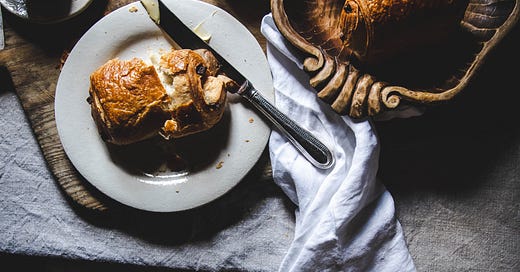The details in Food Photography
How to create simple food stories, and the important little details.
It’s been mornings like this, and although I’m not a coffee person, I seem to be having a cuppa more often than not these days. The local Bean Shot coffee shop just has the best coffee in town, and that’s hard to pass up.
A good pastry, warm from the oven, with butter and jam generously slathered on top. Most morning will benefit from this kind of greeting, but on the odd day, I’ll begin with a green smoothie, but then long for a pastry all day. You know how it goes. So I might as well begin with one.
One of the questions I get asked the most over the years, is how to create compelling food scenes, and although there are many elements to it, if we narrow it down, it all boils down to just a simple few ingredients, that I think will get you a long way.
In this newsletter I wanted to highlight the details that make a good food photo, and how to create simple food scenes with just a few “ingredients”.
What you’ll be able to take away:
How to create simple food narratives.
The important little details that are a part of creating a compelling food stories.
The importance of texture
The importance of even and uneven numbers
The importance of a theme for your food story.
How to make items in your image “speak” to be another.
How to quickly “age” a metal prop.
Placement.
The devil is always going to be in the details, and when creating something simple, a little food scene, every little detail is of importance.
In addition to light and background, which you can read about here, and here. The use of props, which you can read more about here, it all has to work together in supporting a strong narrative, or a point of view.
And every little detail in the scene, benefits from communicating with each other. This is something that can be helped by paying attention to the distance between items.
Oftentimes arranging, plates, cutlery, glassware and other items closer to each other than what you normally would, as the distance between plates can make a scene feel warm and inviting, or on the opposite spectrum, cold and flat, and make all the difference in how a scene feels.
Let me walk you through how I think, and how I work.
Keep reading with a 7-day free trial
Subscribe to From a kitchen in the country to keep reading this post and get 7 days of free access to the full post archives.





